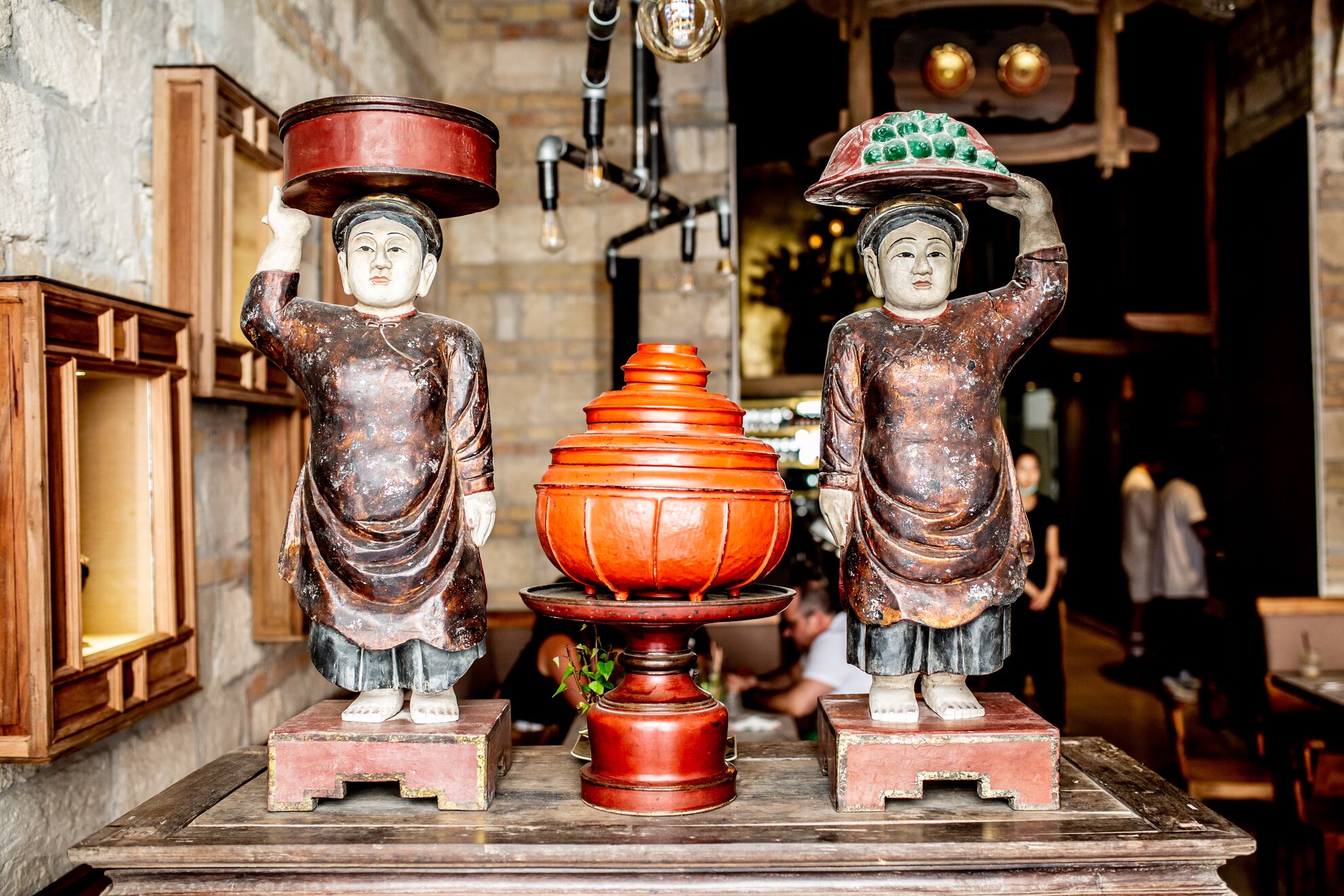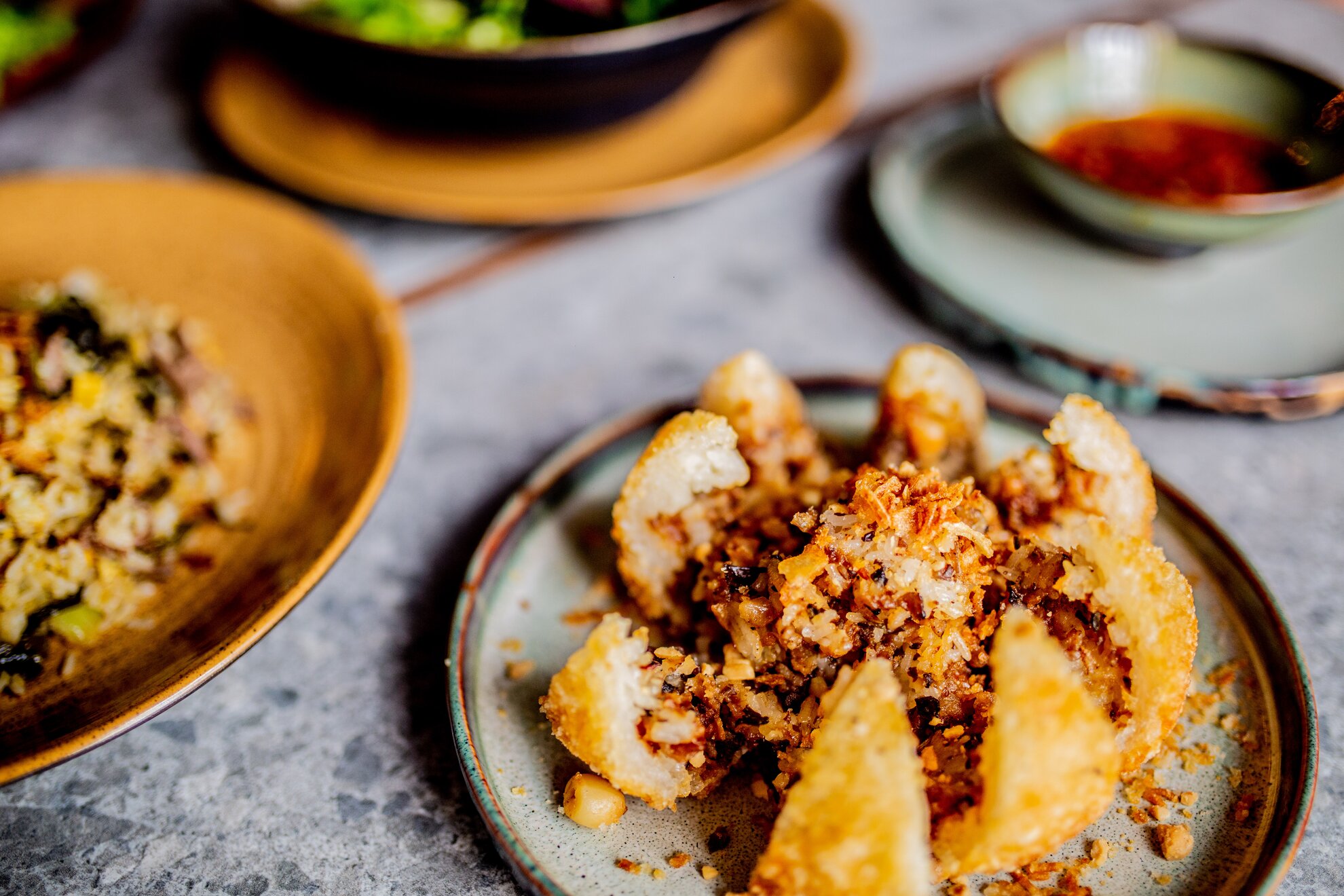Newly opened Quí – ‘precious’ in Vietnamese – shows all the handiwork of the trio who also created the groundbreaking Sáo and Khan. After the youthful flourish of the first venture in the Gozsdu Udvar and the hipster bling of the second in trendy Újlipótváros, Quí they jokingly refer to as their move into maturity.

The interior is modelled on a traditional pagoda, so refined that the raw stone and wood colours are dotted only here and there with the golden hues typical of Oriental shrines. The spiritual atmosphere is strengthened by the main element within, a 19th-century, wood-carved, one-metre tall, gilded statue of Buddha, which stands in the centre, greeting guests as they enter. Tuan, who took on the lion's share of the interior design, was reminded of his childhood visits to pagodas, which became the main motif of the new establishment.

According to Phuong, even though it might sound unusual concerning people in their thirties, maturity, spirituality and religion have become more important in their lives – something they wanted to express with Quí. The choice of location, the city centre, is also meant to reflect this kind of step up. Unlike the previous two venues, where the focus was mainly on Vietnamese and Chinese cuisine, in Quí you also find a very strong Thai range alongside the Vietnamese. For now, they have a launch menu as they are testing the cuisine, but later Chinese dishes will also be represented.

The Thai ones can be divided into two parts: the classics you find everywhere and local specialities you may not find even after a week in Phuket. The temptation to experiment may be strong, but it is absolutely advisable to ask for tried-and-trusted dishes, as they are guaranteed to be presented from a whole different side.

The kuay tiew tom yum (from 2,890 HUF) is halfway between well-known and novelty. As the name suggests, it is a close relative of tom yum, but is served here with rice noodles familiar in pho. Tuan reckons this soup is popular in Thailand, especially around Chiang Mai, yet it is rarely put on the menu. In addition to rice noodles, this curry-like, fragrant, rich dish contains mushrooms, courgettes, lemon, lime leaf, coriander and spring onions, as well as a secret base paste, always made locally according to the house recipe, so you are guaranteed to avoid the commercial curry-paste taste of so many Thai restaurants.

The nam tok (HUF 3,850), excellent as both an appetiser and a main course, is strongly meat-centred, and ideal in the height of summer thanks to the fresh herbs. Thinner-than-thin strips of sirloin arrive on the iron griddle with mint, coriander and spring onions, thickly sprinkled with lime, for a fresh, refreshing, intense culinary experience.

Xoi chien sen (3,850 HUF) can be interpreted in the same way as a common appetiser if shared, and as a main course if consumed alone. This beautiful, flower-shaped dish is based on fried sticky rice, and the special taste is added by minced pork, roasted onions, wood-ear mushrooms and nuts. And you can dunk the broken, petal-like pieces into a gentle, slightly spicy, gentle nut sauce

Pad thai (from 2,790 HUF) is a classic, of course, but as already mentioned, it is highly recommended to try it at Quí – mainly because everyone has sampled the Thai national dish, making it perfect by way of comparison. The noodles are sticky but don’t stick together, and the pad thai sauce gets plenty of tamarind, so the first taste feels like the kind of sweet and sour not achieved with sugar and lemon juice, but with the exciting legumes as originally intended.

In the Vietnamese range, we sample the Quí bun cha (2,990 HUF), a Hanoi classic noodle-meat dish also available at Khan, but a different recipe is used here, as there are as many varieties as there are kitchens. We learn from Phuong that if you really want authenticity, you should first soak the bacon in fish sauce-based nuoc cham and only then cover it with plenty of fresh herbs and the rice noodles left in the bowl.

A typical winter dish from northern Vietnam can also be found on the menu, com rang dua bo (2,850 HUF), actually fried rice with a nice portion of chopped beef and a sour cabbage closely related to pak choy. Although meant for colder days, the sauerkraut is especially refreshing even in summer.

Speaking of refreshments, drinks also play an important role at Quí. Alcohol is barely featured on the menu, but it that’s typical of Vietnamese or Thai cuisine. The booze-free options, on the other hand, are so memorable that it’s actually worth visiting Quí for a glass of something special among the unique lemonades, coolers and coffees. The signature drink is the cinnamon-orange flavoured cam quí (1,150 HUF) which, according to Phoung – who not only makes the drinks but also the cordials they contain – this taste best suits the Quí atmosphere.

The other lemonades are also made from exciting, local ingredients, and the mango cooler (1,490 HUF) evokes the mango shakes sold for pennies on the streets of Thailand. The drinks come in unique glasses and tell a lot about the professionalism of the team, and how much attention they pay to the smallest detail – the house lemonade is served in a glass made in Vietnam in the colours of monk’s clothes, in line with Quí’s basic concept.

Quí
District V. Arany János utca 13
Open: Mon-Sat noon-11pm




